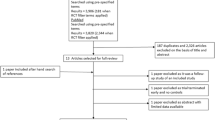Abstract
The objective of this study is to describe the benefit of 20 % subcutaneous infusions of immunoglobulin (SCIg) in patients with dermatomyositis (DM) or polymyositis (PM) after a switch from previous 16 % SCIg treatment. Eight patients with DM or PM, who met the Bohan and Peter’s criteria, previously treated with 16 % SCIg, were switched to weekly 20 % SCIg infusions (Hizentra®; CSL Behring) at doses equivalent to their previous subcutaneous treatment. A standardised protocol was used to evaluate patients, disease activity and treatment response. The disease remained stable in three and improved in four other patients, as documented by increased Medical Research Council scores and normal serum CK levels. No relapse of disease occurred. Local reactions were mild and self-limiting. No serious adverse events were reported. The mean duration of infusion per week was significantly lower compared to the mean duration of the 16 % SCIg preparation. A specifically designed questionnaire documented the patients’ satisfaction with treatment. The weekly administration of 20 % SCIg is effective in maintaining a quiescent disease in patients with DM or PM with no increased safety concerns. SCIg therapy is particularly attractive for patients because it does not require venous access and hospitalisation and requires less assistance from healthcare provider services.
Key messages
• The administration of 20 % SCIg was beneficial and safe in maintaining a quiescent disease and in inducing a complete remission in moderately active disease in patients with DM or PM.
• The treatment with 20 % SCIg lead to the possibility to discontinue and to reduce the use of glucocorticoids and/or the immunosuppressants.
• Patients reported their satisfaction in terms of contact with health professionals, quality of treatment-related information and administration convenience, with an improved quality of life.
Similar content being viewed by others
References
Bohan A, Peter JB (1975) Polymyositis and dermatomyositis. N Engl J Med 292(344–7):403–407
Dalakas MC (2012) Pathogenesis and therapies of immune-mediated myopathies. Autoimmun Rev 11(3):203–206
Danieli MG, Pettinari L, Moretti R, Logullo F, Gabrielli A (2011) Subcutaneous immunoglobulin in polymyositis and dermatomyositis: a novel application. Autoimmun Rev 10(3):144–149
Berger M (2011) L-proline-stabilized human IgG: Privigen® 10 % for intravenous use and Hizentra® 20 % for subcutaneous use. Immunotherapy 3(2):163–176
Troyanov Y, Targoff IN, Trembaly JL et al (2005) Novel classification of idiopathic inflammatory myopathies based on overlap syndrome features and autoantibodies: analysis of 100 French Canadian patients. Medicine (Baltimore) 84:231–249
Borte M, Pac M, Serban M et al (2011) Efficacy and safety of Hizentra®, a new 20 % immunoglobulin preparation for subcutaneous administration, in paediatric patients with primary immunodeficiency. J Clin Immunol 31(5):752–761
Fernandez-Cruz E, Kaveri SV, Peter H-H et al (2009) Intravenous immunoglobulin in immunodeficiencies and autoimmunity. Clin Exp Immunol 158(Suppl1):60–67
Misbah SA, Baumann A, Fazio R et al (2011) A smooth transition protocol for patients with multifocal motor neuropathy going from intravenous to subcutaneous immunoglobulin therapy: an open-label proof-of-concept study. J Peripher Nerv Syst 16(2):92–97
Dalakas MC, Illa I, Dambrosia JM et al (1993) A controlled trial of high-dose intravenous immune globulin infusions as treatment for dermatomyositis. N Engl J Med 329(27):1993–2000
Kivity S, Katz U, Daniel N et al (2010) Evidence for the use of intravenous immunoglobulins—a review of the literature. Clin Rev Allergy Immunol 38(2–3):201–269
Vaitla PM, McDermott EM (2010) The role of high-dose intravenous immunoglobulin in rheumatology. Rheumatology 49(6):1040–1048
Seite JF, Shoenfeld Y, Youinou P, Hillion S (2008) What is the content of the magic draft IVIg? Autoimmun Rev 7(6):435–439
Kessel A, Ammuri H, Peri R et al (2007) Intravenous immunoglobulin therapy affects T regulatory cells by increasing their suppressive function. J Immunol 179(8):5571–5575
Jolles S, Bernatowska E, de Gracia J et al (2011) Efficacy and safety of Hizentra® in patients with primary immunodeficiency after a dose-equivalent switch from intravenous or subcutaneous replacement therapy. Clin Immunol 141(1):90–102
Martin A, Lavoie L, Goetghebeur M, Schellenberg R (2013) Economic benefits of subcutaneous rapid push versus intravenous immunoglobulin infusion therapy in adult patients with primary immune deficiency. Transfus Med 23(1):55–60
Acknowledgments
We deeply acknowledge the help of Miss Ciara O’Hanrahan for her helpful technical assistance.
Disclosures
None.
Author information
Authors and Affiliations
Corresponding author
Rights and permissions
About this article
Cite this article
Danieli, M.G., Moretti, R., Gambini, S. et al. Open-label study on treatment with 20 % subcutaneous IgG administration in polymyositis and dermatomyositis. Clin Rheumatol 33, 531–536 (2014). https://doi.org/10.1007/s10067-013-2478-x
Received:
Revised:
Accepted:
Published:
Issue Date:
DOI: https://doi.org/10.1007/s10067-013-2478-x




